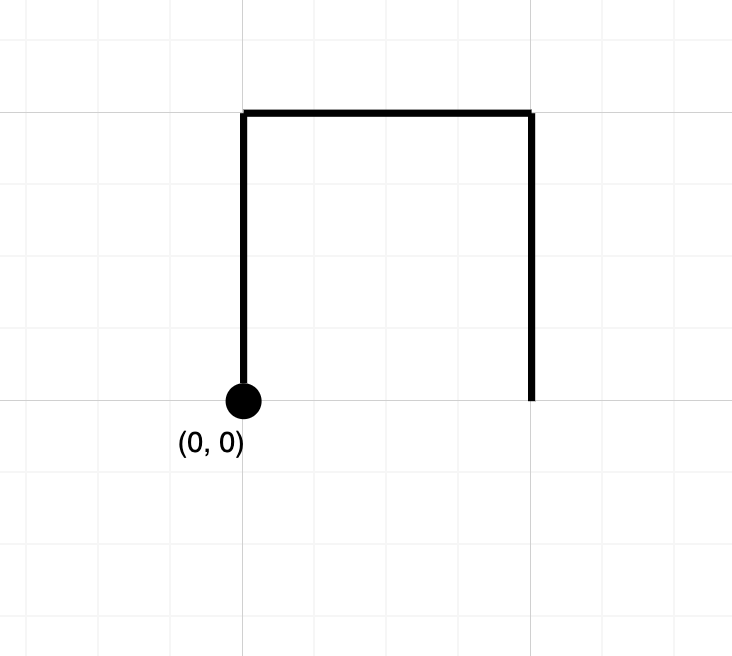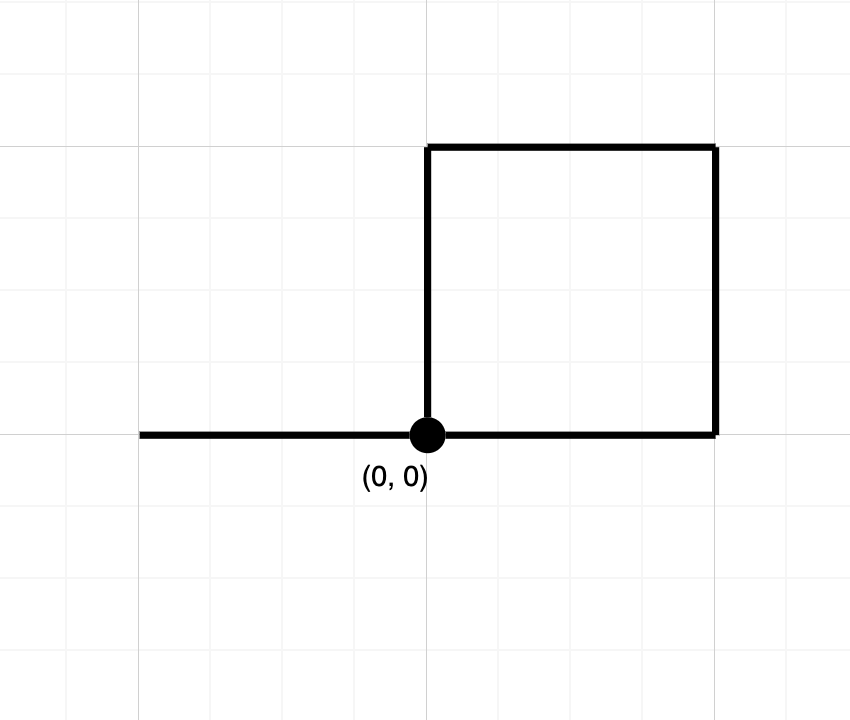Welcome to Subscribe On Youtube
1496. Path Crossing
Description
Given a string path, where path[i] = 'N', 'S', 'E' or 'W', each representing moving one unit north, south, east, or west, respectively. You start at the origin (0, 0) on a 2D plane and walk on the path specified by path.
Return true if the path crosses itself at any point, that is, if at any time you are on a location you have previously visited. Return false otherwise.
Example 1:

Input: path = "NES" Output: false Explanation: Notice that the path doesn't cross any point more than once.
Example 2:

Input: path = "NESWW" Output: true Explanation: Notice that the path visits the origin twice.
Constraints:
1 <= path.length <= 104path[i]is either'N','S','E', or'W'.
Solutions
-
class Solution { public boolean isPathCrossing(String path) { int i = 0, j = 0; Set<Integer> vis = new HashSet<>(); vis.add(0); for (int k = 0, n = path.length(); k < n; ++k) { switch (path.charAt(k)) { case 'N' -> --i; case 'S' -> ++i; case 'E' -> ++j; case 'W' -> --j; } int t = i * 20000 + j; if (!vis.add(t)) { return true; } } return false; } } -
class Solution { public: bool isPathCrossing(string path) { int i = 0, j = 0; unordered_set<int> s{ {0} }; for (char& c : path) { if (c == 'N') { --i; } else if (c == 'S') { ++i; } else if (c == 'E') { ++j; } else { --j; } int t = i * 20000 + j; if (s.count(t)) { return true; } s.insert(t); } return false; } }; -
class Solution: def isPathCrossing(self, path: str) -> bool: i = j = 0 vis = {(0, 0)} for c in path: match c: case 'N': i -= 1 case 'S': i += 1 case 'E': j += 1 case 'W': j -= 1 if (i, j) in vis: return True vis.add((i, j)) return False -
func isPathCrossing(path string) bool { i, j := 0, 0 vis := map[int]bool{0: true} for _, c := range path { switch c { case 'N': i-- case 'S': i++ case 'E': j++ case 'W': j-- } if vis[i*20000+j] { return true } vis[i*20000+j] = true } return false } -
function isPathCrossing(path: string): boolean { let [i, j] = [0, 0]; const vis: Set<number> = new Set(); vis.add(0); for (const c of path) { if (c === 'N') { --i; } else if (c === 'S') { ++i; } else if (c === 'E') { ++j; } else if (c === 'W') { --j; } const t = i * 20000 + j; if (vis.has(t)) { return true; } vis.add(t); } return false; }